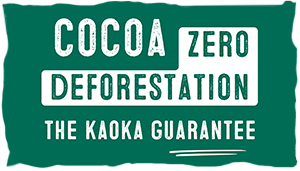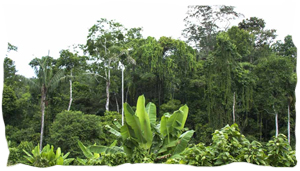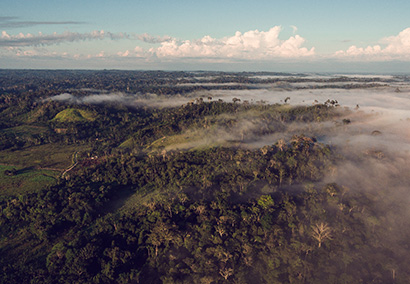Everything you need to know about the new EU regulation on zero imported deforestation
In an era of climate change, the loss of primary tropical forests continues to worsen. In order to curb this phenomenon, the European Union has adopted an ambitious new regulatory text that could shake up the supply policies of many stakeholders. Indeed, preserving forests remains one of the most effective levers in the fight against climate change.
Part 1
The role of forests: essential to our balance
The effects and consequences of deforestation
Forest conservation: a major challenge for slowing the effects of climate change and biodiversity loss
A European regulation against deforestation and forest degradation
Part 2
Kaoka: already committed to zero deforestation cocoa
Kaoka, your sustainable cocoa/chocolate supplier
The role of forests: essential to our balance
As an essential link in the global climate, forests are an invaluable treasure trove, providing vital functions for many species, including our own. They are home to between 50 and 75% of all living species (animals, plants and insects). They are a bulwark against storms and floods. As guardians of rivers, forests provide drinking water to almost half of the world’s largest cities, thanks to their filtering capacity.
Tropical forests represent the second largest carbon reservoir on the planet. Their significant carbon sequestration capacity is essential to our planet’s carbon cycle.
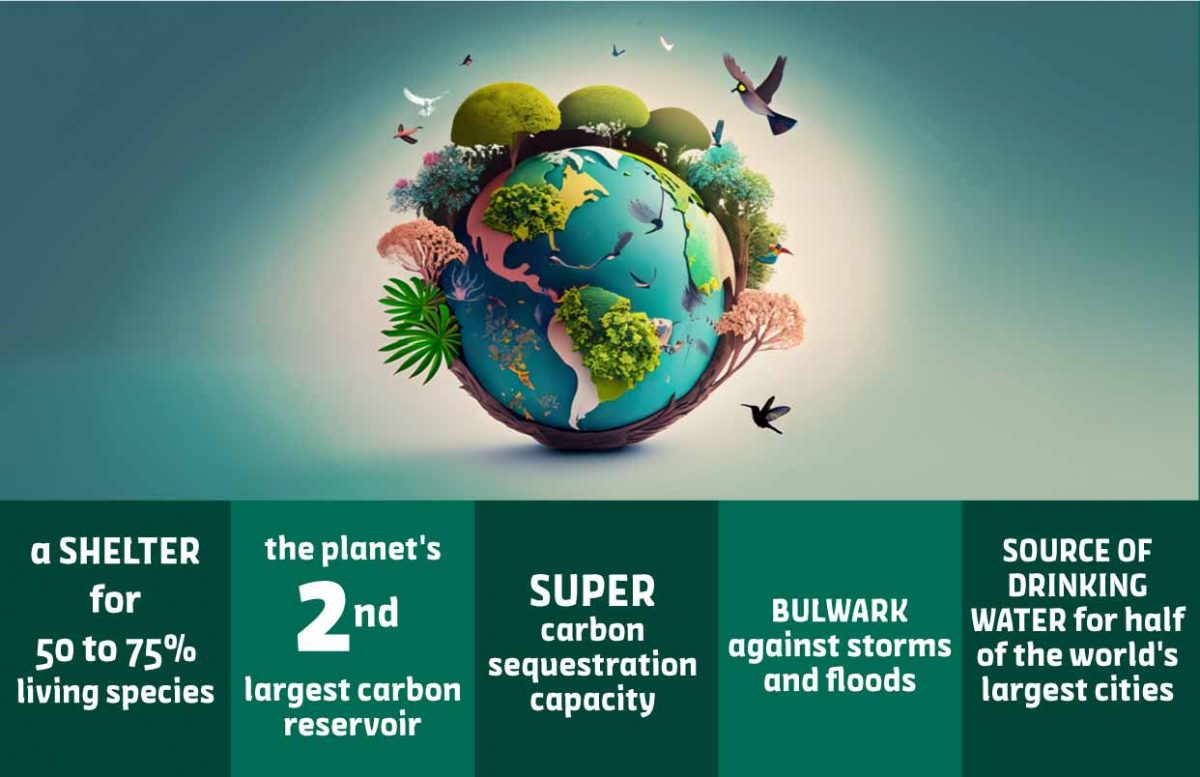
The effects and consequences of deforestation
The impact of deforestation on greenhouse gas emissions
For over 30 years, deforestation has continued to increase, considerably reducing the planet’s carbon storage capacity and contributing to the increase in CO2 in the atmosphere. This phenomenon is also accompanied by an increase in greenhouse gas emissions as the soil, now bare, releases some of the stored organic carbon. This dual consequence is exacerbating climate change. According to the IPCC (Intergovernmental Panel on Climate Change), deforestation is responsible for 11% of greenhouse gas emissions.
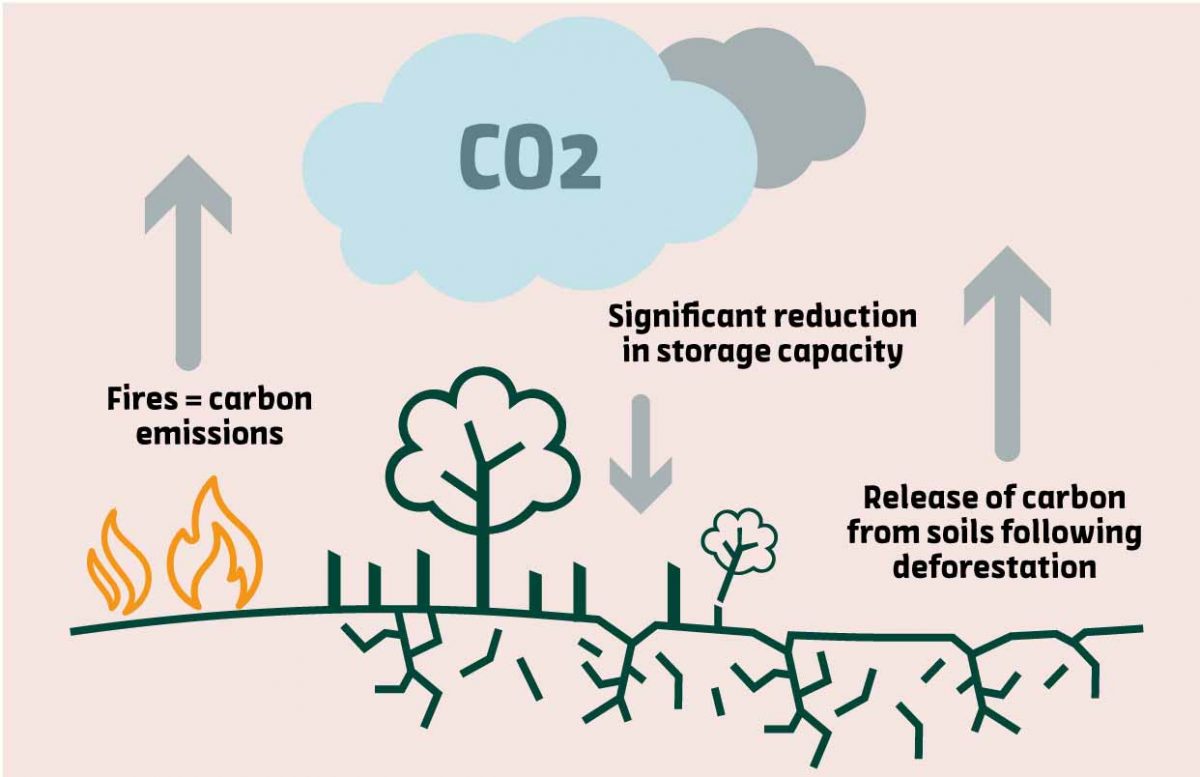
The impact of climate change on forests
Climate change is bringing many negative effects, including an increase in extreme temperatures and droughts. The combination of these phenomena weakens the forests and is at the root of the megafires we have seen in California, Australia, Chile and recently in Canada. These large-scale fires cause a massive release of CO2, which contributes to climate change. A veritable vicious circle…
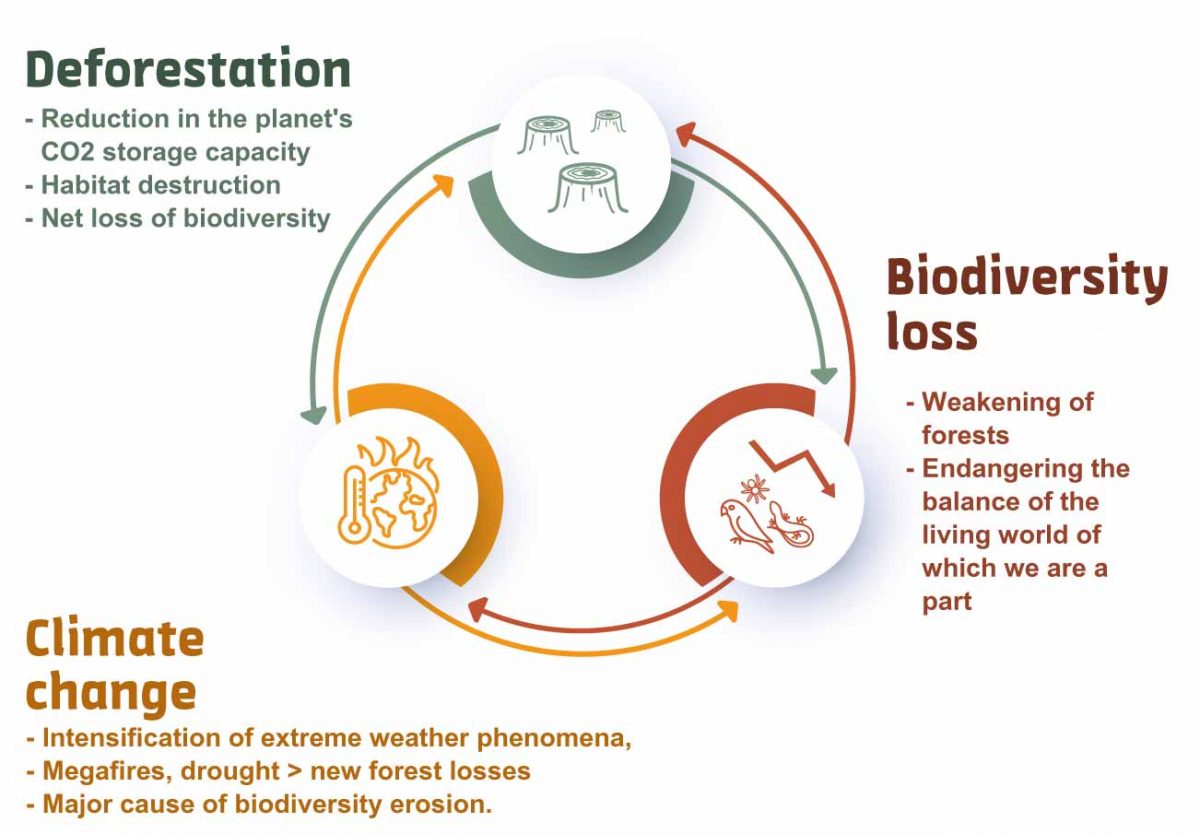
Deforestation: a major cause of biodiversity loss
The deterioration of forests to make way for agricultural plots results in a net loss of biodiversity. The change in land use disrupts the natural habitats of many species, which see their territories shrink or disappear. Clearing forests also provides a gateway for new invasive species, upsetting the local ecosystem balance and causing the disappearance of local species.
Climate change, exacerbated by deforestation and the destruction of natural environments, is also a major cause of biodiversity loss. In recent years, animal and plant species have been disappearing at an unprecedented rate, with serious consequences for the balance of the living world, of which we are a part. It’s important to remember that our food supply is directly dependent on pollinating insect populations.
Biodiversity loss 68% of vertebrate populations (mammals, fish, birds, reptiles and amphibians) disappeared between 1970 and 2016, in less than 50 years.More than half of the world’s gross domestic product is based on ecosystems and the services they provide.
Forest conservation: a major challenge for slowing the effects of climate change and biodiversity loss
The causes of deforestation: between production and consumption
Livestock farming and agricultural production are the main causes of deforestation worldwide. The European Union plays a key role here, with the EU’s share of imported deforestation estimated at 36% of total trade-related deforestation over the period 1990-2008.
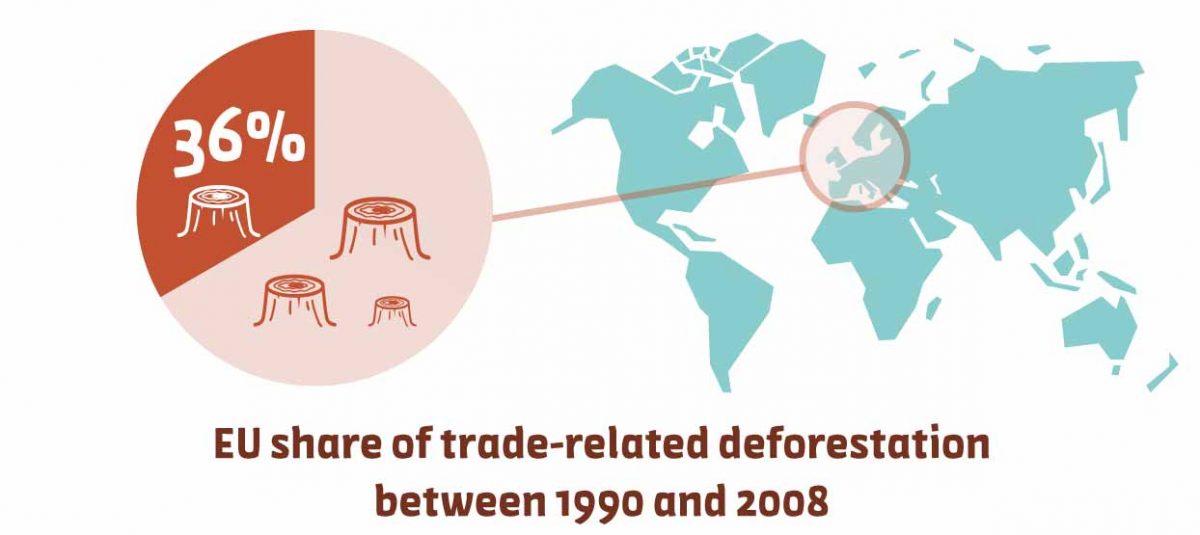
Imported deforestation: what is it?
Imported deforestation represents the direct or indirect deforestation caused by the production of raw materials or processed products outside the consumer’s national territory.
Global deforestation is mainly linked to agriculture, mining and logging (for construction, paper and timber). 75% of deforestation is caused by agriculture, mainly cattle, palm oil and soya production. Other crops such as rice, cocoa and sugar cause forest degradation.
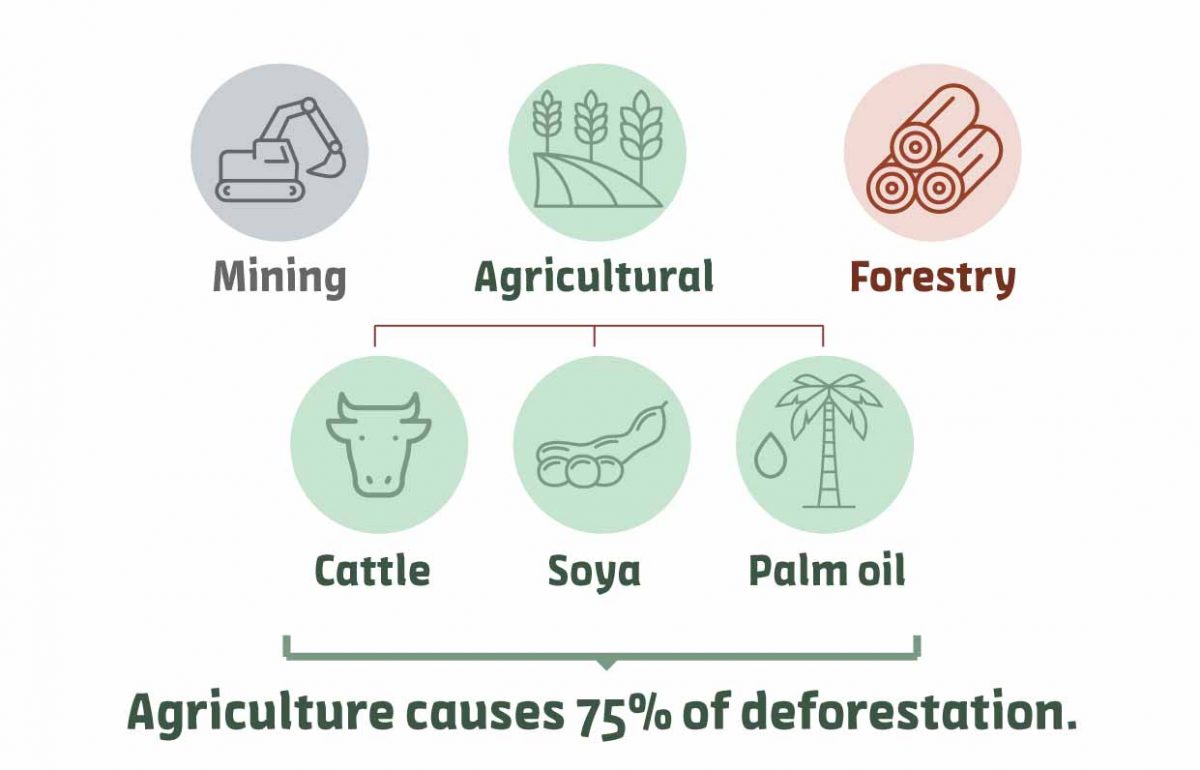
Why is cocoa responsible for deforestation?
Like many crops, cocoa has developed along a pioneering front: Forests are cut down or degraded to make way for cocoa plantations. Faced with growing world demand for cocoa, West Africa – the first and main production area – has been the scene of this process of migration and pioneering conquest of tropical forests.
Did you know about this? It is estimated that cocoa farming has led to the deforestation of around 2.5 million hectares since the early 1990s in the 4 main cocoa-producing countries.
A European regulation against deforestation and forest degradation
Introduced by the European Commission, this European regulation will prohibit the placing on the market or export from the European market of products that have contributed to deforestation or forest degradation after 31 December 2020.
Raw materials affected by this regulation
Entered into force on 30 June 2023, this regulation covers 7 consumer goods: coffee, cocoa, rubber, palm oil, soya, beef and timber, as well as their by-products such as leather, charcoal, printed paper and chocolate.
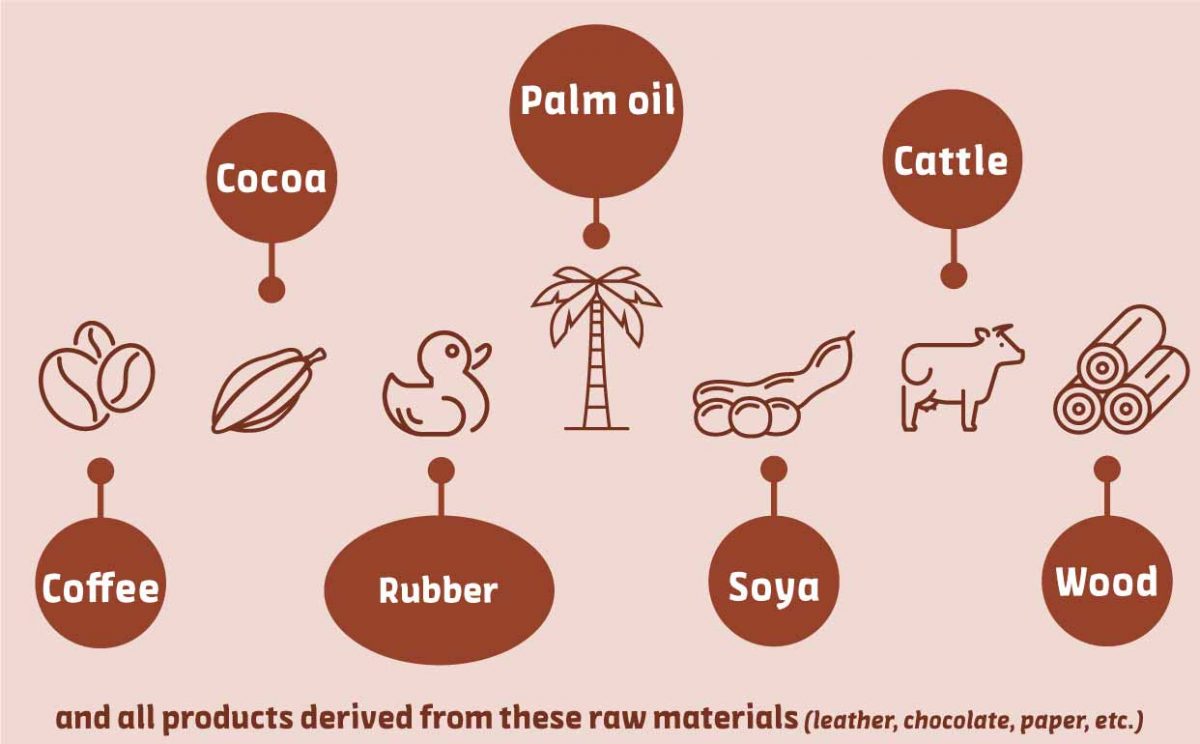
It is important to note that there will be no national transposition: this means that the regulation will be applied in the same way throughout Europe. Providing for a transition period of 18 months to give the stakeholders and operators concerned time to comply, it will come into force on 30 December 2024.
An essential definition of the forest
To determine whether deforestation is taking place, we need to agree on what defines a forest. The regulation is based on the FAO definition (“Global Forest Resources Assessment. Terms and definitions FRA 2020” ) of forest as land larger than 0.5 hectares with trees higher than 5 metres and a canopy cover of more than 10%, or trees capable of reaching these thresholds in situ. It does not include land that is mainly used for agricultural or urban purposes.
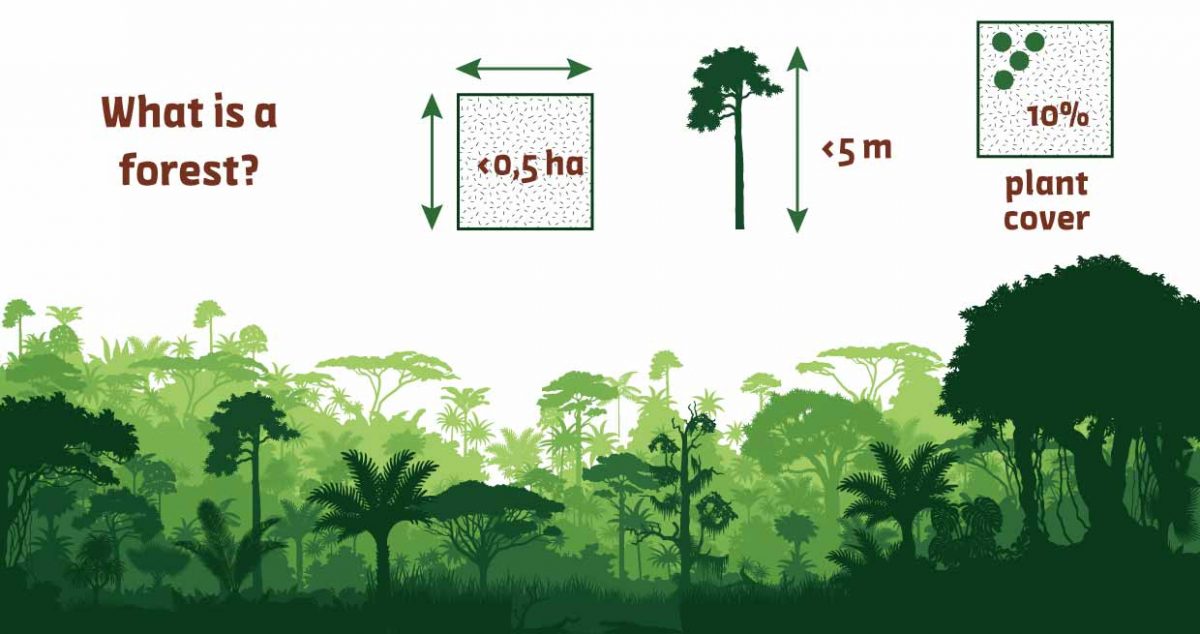
A duty of due diligence
Before their products are exported or placed on the market, the companies affected by the application of the regulation (operators and traders) will be obliged to carry out “due diligence” in order to provide sufficient information to prove that the product involves no or negligible risk of deforestation. They will therefore need to geolocate the origin of the product or raw material at plot level.
Geolocation, as defined by the regulations, is the location of a parcel of land described using latitude and longitude coordinates. For parcels larger than 4 ha, the geographical location must be provided using polygons describing the perimeter of each parcel.
A system for classifying countries according to the risks associated with deforestation will be published over the next 18 months. Operators will then have to adopt appropriate procedures and measures to deal with the potential risks identified.
To ensure that it is applied, a national competent authority will be appointed by the end of 2023.
[Nous mettrons à jour cet article dès que les informations relatives seront disponibles.]
Zero deforestation certification: does it exist?
Today, while some certifications (such as Fair for Life) include deforestation as a KO criterion (meaning that if the independent auditing body identifies deforestation, the operator loses its certification), there are no zero-deforestation certifications, strictly speaking.
Also, the European regulation against imported deforestation does not recognise any certification that would allow the operator to replace its responsibility. However, certification systems can be used during risk assessment to provide additional information on compliance with the requirements set out in the regulation.
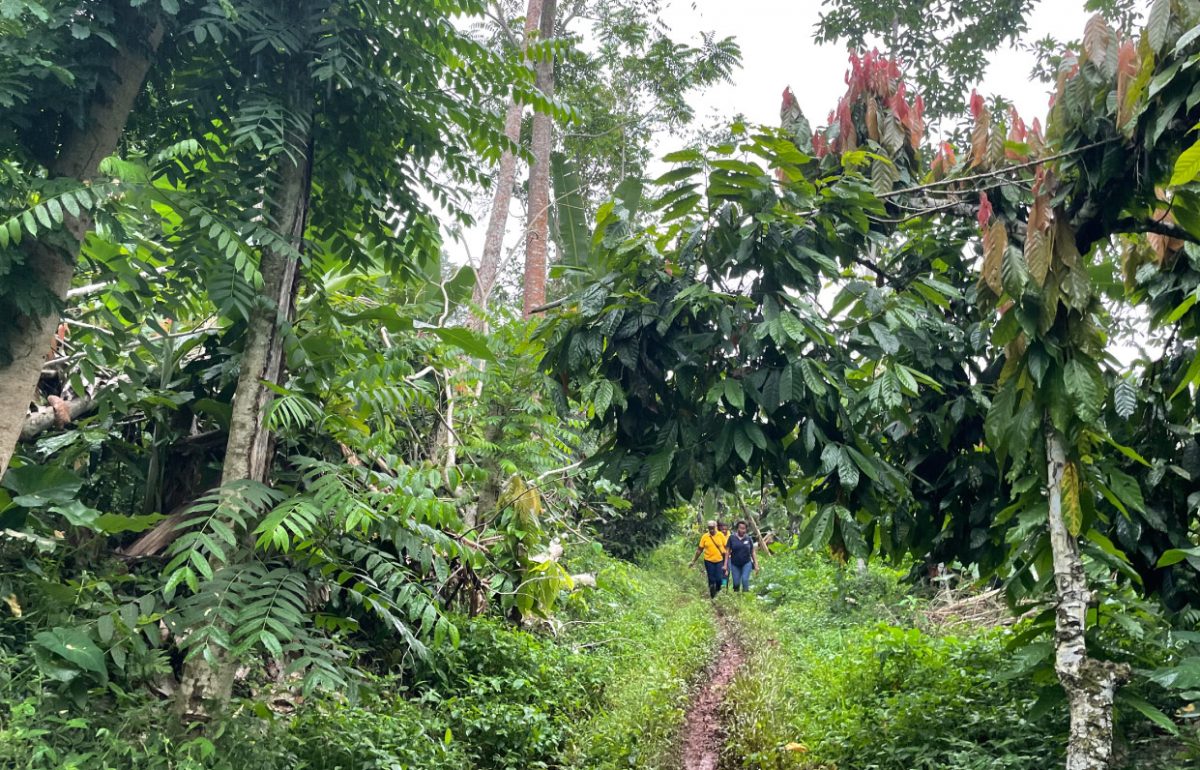
Kaoka: already committed to zero deforestation cocoa
An early advocate of environmental issues, Kaoka has been working on the subject for several years. Dialogue and prevention with our producer partners are at the heart of our approach. To go even further, we have already begun to deploy tools to guarantee that the cocoa in our supply chains is free from deforestation.
An 8.97 million euro project for zero deforestation cocoa In 2021, Kaoka signed an ambitious public-private partnership for the conservation and regeneration of ecosystems/protection of biodiversity and the promotion of truly sustainable agricultural practices within cocoa sectors in Peru, Colombia and Ecuador. With the support of the French Global Environment Facility (Fonds Français pour l'Environnement Mondial) and agroecology research bodies, Kaoka intends to demonstrate the effectiveness of its cultivation model and its ability to be replicated. A revolution that the cocoa industry must lead!
To find out more about this project, we invite you to read this article on Kaoka’s commitment to zero deforestation cocoa.
Mapping and digitising producers’ plots to ensure landscape conservation
Kaoka’s strength lies in the integration of cocoa programs into its strategy and operations. Thanks to our close links with producer organisations, all the producers we work with are clearly identified. So we had beginning by geolocating each of our partner producers’ plots with a GPS point.
Then the edges of these plots were then trimmed and digitised, including plantations of less than 4 hectares.
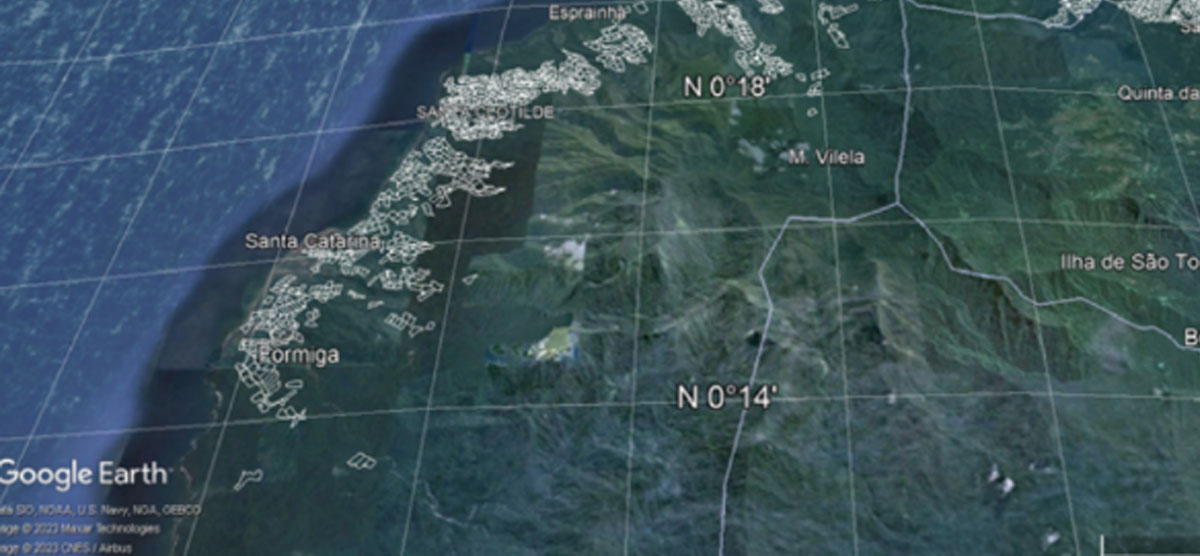
The only way to ensure forest conservation: satellite images
The polygons of the producers’ plots are superimposed on satellite images of the forest areas. This enables us to check that the plantations of our producer partners do not expand over time to the detriment of the forests.
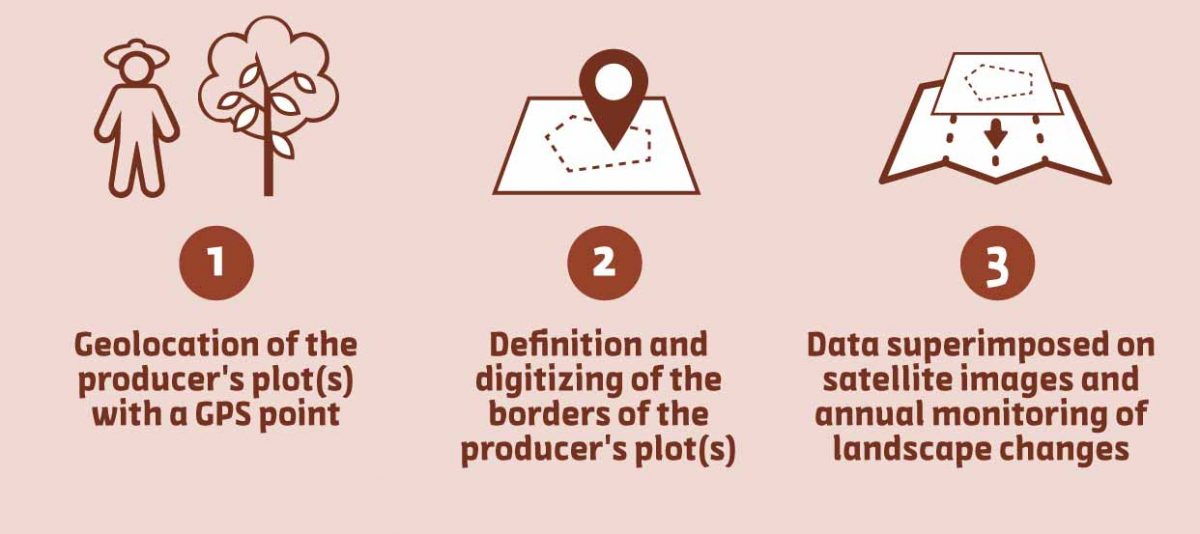
Here is the current status of this project in each of our sectors (February 2024 datas):
– Ecuador: 100% of plot perimeters georeferenced
– São Tomé: 100% of plot perimeters georeferenced
– Peru: 100% of plot perimeters georeferenced
– Dominican Republic: 100% of plot perimeters georeferenced
Since the end of 2023, Kaoka has achieved its objective of having 100% of the borders of its plots georeferenced, one year before the implementation of the European regulation to combat imported deforestation.
However, it is important to remember that behind the phenomenon of deforestation lies an economic necessity: the forests are cut down to enable people to grow crops and thus earn a living. This requires the cocoa and chocolate industry to make an active commitment with viable solutions to support producers.
Aware of the importance of producers’ incomes, Kaoka has been supporting producers for over 30 years with strong guarantees: 100% purchase of their harvest to ensure an outlet, a purchase price higher than the market price, and the implementation of renovation programmes to restore their plantations and improve their harvests year after year.
Signing forest conservation agreements with producers
We are currently working with producers and cooperatives to define management plans for their farms, which will lead to the signing of conservation agreements designed to protect and enhance the forests in their regions and limit the expansion of farms.
Kaoka, your sustainable cocoa/chocolate supplier
Choosing Kaoka as a supplier means securing cocoa supplies that meet the highest standards in terms of sustainability and CSR. This is your guarantee that your cocoa or chocolate raw material is not responsible for deforestation. It means reassuring your own customers with a ‘clean’ product that respects people and the environment.
In Kaoka® chocolates, the cocoa paste and cocoa butter are made exclusively from cocoa beans from its own integrated, certified organic and Fair Trade cocoa programs.
Here you can find all Kaoka® products for professional use.

We hope this article has enabled you to find out more about the subject of imported deforestation and the new related European regulation. We encourage you to pay close attention to the information provided by brands to avoid greenwashing. If you have any specific questions, please do not hesitate to contact us.
